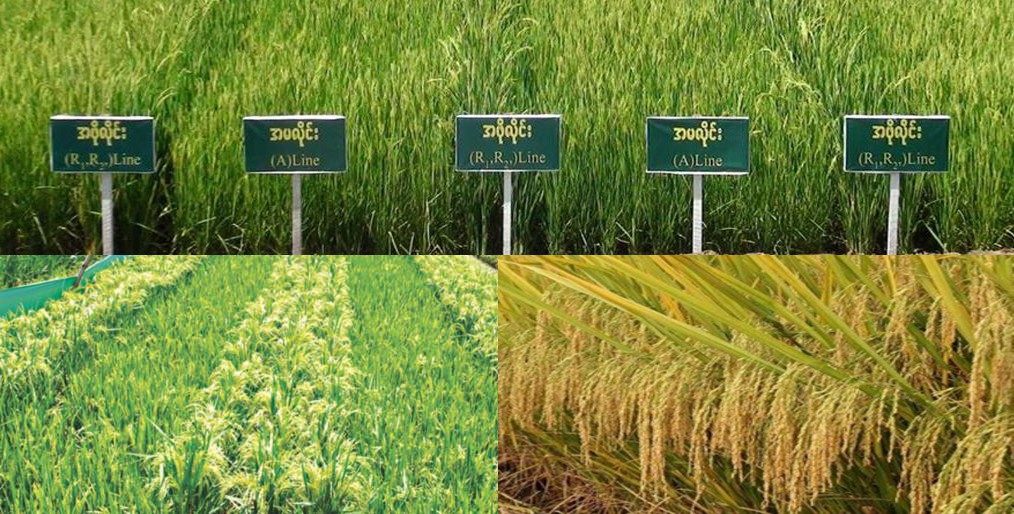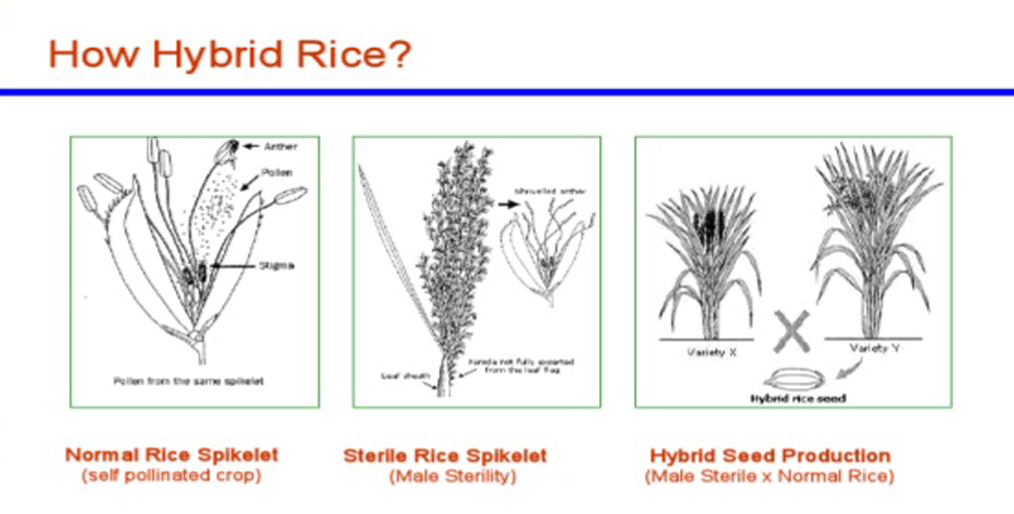
[caption id="attachment_1788" align="aligncenter" width="1014"] File Picture[/caption]
GFMM desk: The hybrid rice seeds market growth in developing countries is varying from moderate to stagnant, owing to the lack of trained human resources, lack of sufficient water, and unfavorable climatic conditions. Rice producing Asian countries, apart from China, which include India, Indonesia, Bangladesh, the Philippines, Vietnam, Myanmar, and Pakistan, together have 4.5 million hectares of land under hybrid rice seed cultivation. The area contributes to a small percentage in each country. The U.N. FAO’s regional office in this region has developed a strategy in collaboration with these countries to move toward sustainable food security in Asia. In African countries such as Liberia, Mozambique, Nigeria, Uganda, Madagascar, and Tanzania, cultivation with hybrid rice seeds started in the early 2000s. The Green Super Rice (GSR) project, which was introduced in some countries in the African continent cultivating hybrid rice seeds, developed in Asia, coordinated by the Chinese Academy Agricultural Sciences, the International Rice Research Institute (IRRI) and Africa Rice, during 2009-2011, succeeded from the yield perspective. However, these hybrid rice seeds are not practical for commercial rice production, since they are susceptible to African diseases. Developing hybrid rice seeds that have better resistance to these diseases as well as high yield potential will be more beneficial. On the other hand, Egypt has succeeded in producing a local hybrid rice seed variety on a commercial scale through a rice breeding program. With strategic programs and support from the private sector, governments, and leading companies, hybrid rice development in Asia and Africa has a great potential to achieve a breakthrough in the technology related to hybrid rice seeds.
[caption id="attachment_1789" align="aligncenter" width="1014"]
File Picture[/caption]
GFMM desk: The hybrid rice seeds market growth in developing countries is varying from moderate to stagnant, owing to the lack of trained human resources, lack of sufficient water, and unfavorable climatic conditions. Rice producing Asian countries, apart from China, which include India, Indonesia, Bangladesh, the Philippines, Vietnam, Myanmar, and Pakistan, together have 4.5 million hectares of land under hybrid rice seed cultivation. The area contributes to a small percentage in each country. The U.N. FAO’s regional office in this region has developed a strategy in collaboration with these countries to move toward sustainable food security in Asia. In African countries such as Liberia, Mozambique, Nigeria, Uganda, Madagascar, and Tanzania, cultivation with hybrid rice seeds started in the early 2000s. The Green Super Rice (GSR) project, which was introduced in some countries in the African continent cultivating hybrid rice seeds, developed in Asia, coordinated by the Chinese Academy Agricultural Sciences, the International Rice Research Institute (IRRI) and Africa Rice, during 2009-2011, succeeded from the yield perspective. However, these hybrid rice seeds are not practical for commercial rice production, since they are susceptible to African diseases. Developing hybrid rice seeds that have better resistance to these diseases as well as high yield potential will be more beneficial. On the other hand, Egypt has succeeded in producing a local hybrid rice seed variety on a commercial scale through a rice breeding program. With strategic programs and support from the private sector, governments, and leading companies, hybrid rice development in Asia and Africa has a great potential to achieve a breakthrough in the technology related to hybrid rice seeds.
[caption id="attachment_1789" align="aligncenter" width="1014"] File picture[/caption]
A Milestone in Hybrid Rice Seeds Technology
Hybrid rice seeds are a product of the hybridization of two good parent rice varieties, which are engineered with desirable traits such as higher yield. Such hybrid rice seeds do not pass the same genetic information to the next generation of seeds. Hence, if farmers need to achieve the same yield the next time, buying new hybrid rice seeds is a must. However, a recent study conducted at the laboratory level shows the possibility of preserving genetic information through the self-cloning of hybrid rice seeds. On December 12, 2018, it was reported that, hybrid rice seeds engineered with CRISPR, a gene-editing tool, can produce such a rice plant that can clone their seeds. Successful commercial production of such hybrid rice seeds can lead to a marvelous improvement in hybrid rice seed technology and overall crop development.
[caption id="attachment_1790" align="aligncenter" width="1014"]
File picture[/caption]
A Milestone in Hybrid Rice Seeds Technology
Hybrid rice seeds are a product of the hybridization of two good parent rice varieties, which are engineered with desirable traits such as higher yield. Such hybrid rice seeds do not pass the same genetic information to the next generation of seeds. Hence, if farmers need to achieve the same yield the next time, buying new hybrid rice seeds is a must. However, a recent study conducted at the laboratory level shows the possibility of preserving genetic information through the self-cloning of hybrid rice seeds. On December 12, 2018, it was reported that, hybrid rice seeds engineered with CRISPR, a gene-editing tool, can produce such a rice plant that can clone their seeds. Successful commercial production of such hybrid rice seeds can lead to a marvelous improvement in hybrid rice seed technology and overall crop development.
[caption id="attachment_1790" align="aligncenter" width="1014"] File Picture[/caption]
Hybrid Rice Seeds Giving Higher Economic Returns
Rice cultivation using hybrid rice seeds has been reported to produce higher economic returns when compared to the economic returns of conventional rice varieties. This is due to the significant yield the hybrid rice seeds over conventional rice seeds. Also, the milling yield of hybrid rice seeds was found to be the same, or in some cases better than the milling yield of conventional rice seeds. This advantage of cultivation with hybrid rice seeds is likely to encourage poor farmers to shift from conventional rice seeds to hybrid rice seeds.
Source: Online/SZK
File Picture[/caption]
Hybrid Rice Seeds Giving Higher Economic Returns
Rice cultivation using hybrid rice seeds has been reported to produce higher economic returns when compared to the economic returns of conventional rice varieties. This is due to the significant yield the hybrid rice seeds over conventional rice seeds. Also, the milling yield of hybrid rice seeds was found to be the same, or in some cases better than the milling yield of conventional rice seeds. This advantage of cultivation with hybrid rice seeds is likely to encourage poor farmers to shift from conventional rice seeds to hybrid rice seeds.
Source: Online/SZK
Comment Now